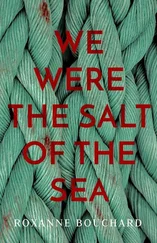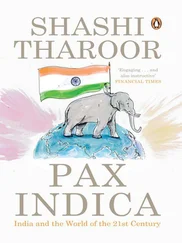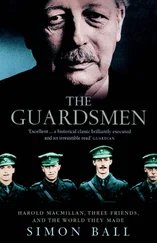
View of the death strip between East and West Berlin 1981
© Archiv Bundesstiftung Aufarbeitung / Bestand Michael von Aichberger Nr. 698
In 1989, the border around West Berlin was a total of 156.4-kilometre-long, of which 43.7 kilometres ran between the two halves of the city and 112 kilometres between West Berlin and the Potsdam district. According to an inventory of the border troops, the border section consisted of 63 kilometres of built-up area, 32 kilometres of wooded area, 22.65 kilometres of open terrain, and 37 kilometres of water border. Along 41.91 kilometres of the border there was the “Grenzmauer 75”, another 58.95 kilometres consisted of the third-generation Wall in prefabricated construction and 68.42 kilometres were bordered by expanded metal fence. The light strip had a length of 161 kilometres and the signal fence covered 113.85 kilometres. There were 186 observation towers and 31 command posts of the border troops in the death strip. Access to West Berlin was possible via 13 road border crossings, four rail border crossings and eight waterway border crossings, all of which were well secured. 39
SHOOT-TO-KILL ORDER AND FATALITIES
A great danger to people trying to escape were the difficult-to-cross barriers and the support of the border guards by the People’s Police, the State Security, their unofficial staff, and border police volunteers. The deadly threat at the border, however, was the shooting of fugitives and so-called border violators. Even though members of the GDR’s political and military leadership still denied at the trials in the 1990s that there had ever been a shoot-to-kill order, killing at the Wall was common practice. 40
From a formal legal point of view, the laws, service regulations and orders on the use of firearms only contained a “permissive” element, not an obligation to kill. Nevertheless, the explicit instructions given to border troops during their daily check-in – to prevent any escape attempt and “destroy border violators” led to the deaths of 140 people at the Berlin Wall alone, most of them through the use of firearms. Among the fatalities were 101 refugees, 30 people from East and West, and one Soviet soldier with no intention of escaping who was either shot or died in an accident. In addition, there were eight border guards killed on duty. Most of the victims were young men between the ages of 17 and 29. In addition, at least 251 mostly elderly people died in visitor and travel traffic at the border crossing points between East and West Berlin. 41
The last person shot trying to escape over the Wall was 21-year-old Chris Gueffroy who was shot on 5 thFebruary 1989 whilst trying to escape along the Britz district canal. 42He had heard from a friend that the order to shoot at the Wall had been lifted and wanted to escape military service with the NVA (National People’s Army) by fleeing. Whilst the four soldiers who broke off the escape attempt were given a cash reward of 150 Marks and military awards for their actions by the border police, Gueffroy’s friend, who also tried to escape and suffered substantial injuries, was sentenced to three years imprisonment. Significant international pressure led Honecker to lift the order to kill on 3 rdApril 1989. 43For Chris Gueffroy, this order came too late.
HUMANITARIAN INTERVENTIONS AS A SIGN OF THE DÉTENTE POLICY
Despite the deadly threat and many failed escape attempts, 40,101 people managed to flee from the GDR to the West during the 28 years that Germany was divided by the Berlin Wall and the barriers along the Inner-German border. 5,075 escaped over border fortifications in Berlin. 44In order to alleviate the inhumane situation resulting from German division, the government began looking for humanitarian solutions for those who had been affected. In December 1963, the West Berlin Senate negotiated a pass agreement with the GDR authorities that allowed West Berliners to visit their relatives in East Berlin for the first time since the Wall was built. 730,000 citizens made use of this between 19 thDecember 1963 and 5 thJanuary 1964. In total, 1.2 million visits were registered. In the same year, after holding dificult negotiation talks, the Federal Republic managed to buy the first political prisoners in the GDR out of prison. This is how 33,755 political prisoners were bought out of prison and resettled in the West by the time the GDR had collapsed. Large sums per capita had to be paid for this. 45
New rules to allow pensioners to travel were also agreed in 1963. The real breakthrough came in the course of the German government’s “Neue Ostpolitik” (new politics for the East) under Willy Brandt. The GDR wanted to be accepted as an equal partner under international law on the international stage. In order for this to happen, the GDR had to adhere to humanitarian and political norms. In 1972, as a result of the social, political and economical agreements made between West Germany and some of the Eastern Block, new rules were put in place in relation to travel and visits (these were referred to as the Ostverträge in German). It was also agreed at the same time that East Germans would be allowed to visit relatives in the West in exceptional circumstances.
Following the Helsinki Declaration in 1975, scores of GDR citizens called upon the last act of the Declaration to demand the right to choose their place of residence and made applications to emigrate. The wave of people escaping East Germany had been dramatically reduced due to the laying of mines and automatic firing devices along the Inner-German border. However, in 1975, there was a wave of people applying to emigrate. 46
In 1975 alone, there were over 20,000 applications made by people wishing to leave the GDR and the numbers were increasing. The state security apparatus was purposefully expanded in order to reduce the number of people wishing to leave.
Under domestic pressure in 1984, the GDR government let 21,000 applicants leave the country and started a surge of arrests as a deterrent.The hope that this would solve the problem was not fulfilled. In view of the successful applications to leave the country, the number of applications rose sharply. Even when travel opportunities for GDR citizens to the West were further relaxed in 1986 and visits to relatives became possible to a greater extent, the desire to leave the country did not decrease, but increased again by leaps and bounds. The discontent amongst the population of the GDR had rapidly increased as a result of a worsening economic situation and daily indoctrination.
PEACEFUL REVOLUTION AND THE FALL OF THE WALL 47
The domestic political crisis in the GDR reached its peak in 1989. The economy was in a disastrous state and the people were increasingly discontent. The GDR was facing bankruptcy. Since the mid-1980s, opposition groups had emerged and networked. This GDR opposition attempted to establish a counter-public sphere against the SED’s monopoly on opinion and strove to democratize society. GDR citizens looked with interest to the Soviet Union, where Mikhail Gorbachev, as General Secretary of the Central Committee of the Communist Party, had begun a reform process in 1985. His policy of “Glasnost” (openness) and “Perestroika” (transformation) allowed for a previously unthinkable discussion of political and social problems and aimed at increased personal responsibility to solve the serious economic difficulties. Although Gorbachev had opened up his planned economy, his real intention was to improve communism. As far as foreign policy was concerned, he abandoned the Brezhnev Doctrine which had only allowed limited independence of states in the Warsaw Treaty and gave the Soviet Union the right to military intervention if the Socialist system was deemed to be endangered.
Читать дальше













